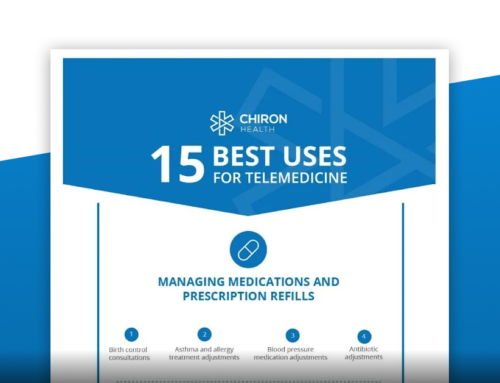Thomas J Kim, MD, MPH
Physician Evangelist, Direct Health
Texas has long been a leader in telemedicine.
That being said, the Lone Star state has taken center stage for a rather contentious debate over the question of what telemedicine is and is not.
The stakes could not be higher as we spend more and more on healthcare only to receive less and less. Adding that the telemedicine market is projected to surpass $34 billion by 2020, it surprises no one that people have been closely watching events unfold here in Texas.
Arguments on the question of “what telemedicine is” have been offered, unfortunately, through the court system. The debate has been amplified by the press who correctly recognize telemedicine as a newsworthy topic. The narrative has largely been reported as a David and Goliath melee pitting innovation against an overly restrictive regulatory framework.
That narrative is wrong… or at least misplaced as it only serves to distract from the shared goal of how to best care for Texans.
More importantly, the melee is hopefully over with the introduction of Senate Bill 1107 and House Bill 2697 during the 85th Texas Legislative session. These bills represent over a year of collaborative effort including nearly every relevant stakeholder with a vested interest in finding a way to support telemedicine in Texas.
I moved to Texas “as quick as I could” back in 2009. Texas is the fourth state I’ve had the pleasure to call home since becoming a doctor and devoting my professional life to telemedicine. I recall every success and setback I’ve had in caring for my patients with technology. And through my experiences, I’ve come to appreciate that each state represents a unique developmental stage based on history. As Texas has been telemedically caring for folks longer than most, it is far from surprising that the regulations reflect decades of iterative guidance to promote safe and effective healthcare in Texas.
Back then, I recall feeling both liberated by Texan regulations and confined by the decades-old rules. I was no longer forced to test my risk tolerance due to a lack of meaningful guidance, but I remained hemmed in by the limitations imposed if I wished to be paid. Resolving this dissonance became one of my primary life goals.
Recently, I had the opportunity to fulfill that goal and offer my full throated support for HB 2697. SB 1107 and HB 2697 have two key takeaways
1 Emphasizing that healthcare is built upon a valid therapeutic relationship.
2 Requesting transparency with respect to telemedicine reimbursement policies.
The first takeaway codifies the guiding principle that care begins with the practitioner patient relationship. Upon this principle, telemedicine can be understood as a means to a service or said another way…telemedical care is medical care.
By shifting the emphasis to a valid therapeutic relationship, we can stop the unproductive consideration of “in person” requirements. Telemedicine as a means to a service also clarifies the opportunity for providers to cultivate telemedical skill mastery to enhance the care of their patients.
The second takeaway was a lesson in political expediency for me. If telemedicine is a means to a service, any covered service should logically reimburse with parity. True parity, however, is largely a theoretical notion despite existing regulatory language and remains a future hill to climb.
Cost transparency, however, is achievable with the predicted upside of reducing costs and emphasizing value. Understanding costs is a key step to determining what works. Payers have expressed concern over a perceived bill “mandate” threatening a flood of overutilization. As a provider has only so many hours to care for patients, I struggle to see how utilization would rise with telemedicine as a means to a service. I do, however, see how telemedicine can make some of those encounters more meaningful by bringing the right provider with the right information at the right time.
Direct Health recognizes the importance of the therapeutic relationship and have built a clinical tool that will radically transform delivery of care for the better. The Direct Health platform offers providers the opportunity to truly care for their patients without the effort, cost and time of conventional service options.
If you enjoyed this article be sure to check out, The Future of Healthcare Has Arrived in Texas





Leave A Comment